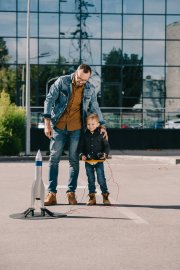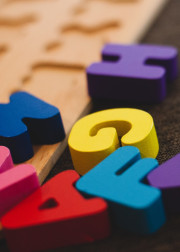Required Key Skills for 911 Dispatcher Practice Test
Do you want to work as an emergency dispatcher? Do you think you have what it takes to handle the pressures of the job? There’s only one way to find out – take the 911 dispatcher test! This quiz will measure your knowledge of emergency dispatch procedures and protocols. It will also test your ability to think quickly and effectively under pressure.
So if you think you’re up for the challenge, let’s get started!
The written exam will test your knowledge of dispatch procedures, radio communications, and emergency medical terminology.
You will be given a scenario and asked to respond to it using the proper protocols. The practical exam will test your ability to use the dispatch system and equipment. You will be given a call and asked to route it appropriately.
What is the 911 Dispatcher Test?
If you wish to work as a public safety dispatcher, you will first need to successfully pass a 911 operator exam. The 911 Dispatcher Test is an important part of the 911 dispatcher hiring process. It is designed to assess your knowledge and skills in dispatch communications. The test may be taken by anyone who wishes to become a 911 dispatcher.
This is not an easy exam, but if you study and prepare properly, you can increase your chances of passing. So, here are some tips on how to prepare for the 911 dispatcher test
1. Familiarize yourself with the test format
The 911 dispatcher test is typically multiple choice. Therefore, you will need to know how to answer questions quickly and accurately under pressure. Make sure to take tests from various websites and applications for example – Wondeslic Wonscore Practice Test.
2. Study up on emergency procedures
A big part of being a 911 dispatcher is knowing what to do in various emergencies. Make sure you know the proper procedures inside and out.
3. Practice your communication skills
As a 911 dispatcher, you will need to communicate clearly and concisely. Practice talking to people calmly and professionally.
4. Stay calm under pressure
When taking the 911 dispatcher test, you will be under a lot of stress. Therefore, you must stay calm and focus on the task at hand.
5. Get plenty of rest before the test
You must be at your best when taking the 911 dispatcher test. Ensure you get a good night’s sleep before the exam to be sharp and focused.
Follow these tips, and you will be well on your way to passing the 911 dispatcher test.
911 Dispatcher Exam Pattern
The test consists of two parts: written and practical exams.
The written exam will test your knowledge of dispatch procedures, radio communications, and emergency medical terminology. You will be given a scenario and asked to respond to it using the proper protocols. The practical exam will test your ability to use the dispatch system and equipment. You will be given a call and asked to route it appropriately.
Types of 911 Dispatcher Tests
- CritiCall Test
- Post Dispatcher Test
- NYPD 911 Operator Exam
1. CritiCall Test
The CritiCall test is a computer-based skills test that measures a candidate’s ability to perform the essential functions of a 911 dispatcher.
The test consists of five components: data entry, multitasking, memory, prioritization, and map reading.
Data Entry
The data entry portion of the CritiCall test measures a candidate’s speed and accuracy in entering information into a computer system. Candidates are given a list of items to enter and must do so as quickly and accurately as possible.
Multitasking
The multitasking portion of the CritiCall test measures a candidate’s ability to handle multiple tasks simultaneously. Candidates are presented with a list of tasks to complete, and they must do so while also monitoring a simulated 911 call.
Prioritization
The prioritization portion of the CritiCall test measures a candidate’s ability to prioritize tasks. Candidates are given a list of tasks to complete, and they must prioritize them based on importance.
Map Reading
The map reading portion of the CritiCall test measures a candidate’s ability to read and understand maps. Candidates are given a map and a list of locations and must find the quickest way to get from one place to another.
Memory Recall
The memory recall portion of the CritiCall test measures a candidate’s ability to remember information. Candidates are given a list of items to remember and must recall as much information as possible.
Probability
The probability portion of the CritiCall test measures a candidate’s ability to understand and apply basic concepts of probability. Candidates are given a list of items and must determine the probability of each item occurring.
Reading Comprehension
The reading comprehension portion of the CritiCall test measures a candidate’s ability to read and understand written material. Candidates are given a passage to read, and they must answer questions about the passage.
Mathematical Reasoning
The mathematical reasoning portion of the CritiCall test measures a candidate’s ability to understand and apply basic mathematics concepts. Candidates are given a list of problems to solve, and they must do so using basic mathematical principles.
Sentence Clarity
The sentence clarity portion of the CritiCall test measures a candidate’s ability to write clear and concise sentences. Candidates are given a prompt and must write a response.
Cross Referencing
The cross-referencing portion of the CritiCall test measures a candidate’s ability to find information in multiple sources. Candidates are given a list of items to find, and they must do so by looking at various sources.
Research
The research portion of the CritiCall test measures a candidate’s ability to find information. Candidates are given a list of items to find, and they must do so by researching various sources.
Source Evaluation
The source evaluation portion of the CritiCall test measures a candidate’s ability to evaluate sources of information. Candidates are given a list of sources and must evaluate them based on specific criteria.
2. POST Dispatcher Test
This test is a multiple choice test that usually takes between 2.5 – 3 hours to finish. The total score is the sum of your correct answers and the scores from each test component, which are then compared to the statewide average of all test-takers in California to compute your final assessment.
The following are the subtests included in the POST Entry-Level Dispatcher exam:
Checking and Listening Skills
This subtest measures your ability to use basic skills required for a dispatcher’s job. You will be asked questions about the information you hear, read, or see in short conversations, messages, and other materials.
Setting Priorities
This subtest measures your ability to set priorities in a dispatcher’s job. You will be asked questions about the information you hear, read, or see in short conversations, messages, and other materials.
Reading Comprehension
This subtest measures your ability to understand what you read in a dispatcher’s job.
Sentence Clarity
This subtest measures your ability to use clear and concise sentence structure in a dispatcher’s job.
Call Taking
This subtest measures your ability to understand and follow oral and written directions in a dispatcher’s job.
Checking Coded Information
This subtest measures your ability to use basic skills required for a dispatcher’s job.
3. NYPD 911 Operator Exam
The NYPD 911 operator exam tests your knowledge, skills, and abilities. The examination is designed to assess your ability to perform the duties of a police dispatcher. The test consists of two parts: written and oral examinations.
You must pass both parts of the examination to be eligible for an appointment to the position of police dispatcher.
The written examination consists of multiple-choice questions that measure your knowledge of English grammar, spelling, and vocabulary and your ability to read and comprehend written materials.
The oral examination is conducted in English and measures your ability to communicate effectively in speaking and writing.
You must achieve a passing score on both the written and oral examinations to be eligible for an appointment as a police dispatcher.
The GRE is offered at the New York City Computer-based Testing and Application Center. To be considered for the position, you must score at least a 70%. The following areas are covered in this exam:
- Written Comprehension: This section includes questions about testing your ability to understand written materials such as police reports, memos, and instructions.
- Written Expression: This section tests your ability to communicate clearly and effectively in writing.
- Memorization: This section tests your ability to remember information such as names, numbers, and codes.
- Problem Sensitivity: This section covers the questions related to identifying problems and taking appropriate action.
- Oral Comprehension: It includes understanding spoken materials, such as instructions, directions, and questions.
- Deductive Reasoning: It covers questions about testing your ability to draw logical conclusions from given information.
- Inductive Reasoning: It includes the questions to test your ability to see relationships between given information and to generalize from that information.
- Information Ordering: This section tests your ability to put information in an order that makes sense.
Required Key Skills for 911 Dispatcher Practice Test
To become a 911 dispatcher, you must have excellent communication skills. You will also need to be able to think quickly and make decisions under pressure. The following are some key skills you will need to practice before taking the 911 dispatcher practice test.
Decision Making
You will need to be able to make decisions quickly and under pressure. The 911 dispatcher practice test will help you learn how to do this.
Communication
You will need to have excellent communication skills. You must communicate clearly and effectively with the caller and the other emergency personnel. The 911 dispatcher practice test will help you learn how to do this.
Critical Thinking
You will need to be able to think quickly and critically to assess the situation and decide what needs to be done. Again, the 911 dispatcher practice test will help you learn how to do this.
Caller Management
You will need to be able to manage the callers efficiently and effectively. The 911 dispatcher practice test will help you learn how to do this.
Emergency Management
You will need to be able to manage the emergency effectively. The 911 dispatcher practice test will help you learn how to do this.
Prioritization
You will need to be able to prioritize the callers and the emergency. The 911 dispatcher practice test will help you learn how to do this.
Time Management
You will need to manage the time efficiently to ensure that all the callers are helped on time. The 911 dispatcher practice test will help you learn how to do this.
Map Reading
You must read maps to understand the caller’s location and direct the emergency personnel to the scene. The 911 dispatcher practice test will help you learn how to do this. In this question, you’ll need to pick the quickest path while staying within the bounds of the law for the emergency vehicle’s arrival.
You will need to practice these skills before taking the 911 dispatcher practice test. There are many other important skills that you will need to learn to become a successful 911 dispatcher.
At the End
Hope this guide explains everything you need to know about the 911 dispatcher test, from what’s on the test to how best to prepare. Gain a better understanding of what skills are being tested and learn how to hone your abilities so that you can apply for the test confidently. Good luck!
Learn more about career options:
Read when to start teaching kids about career building skills.








